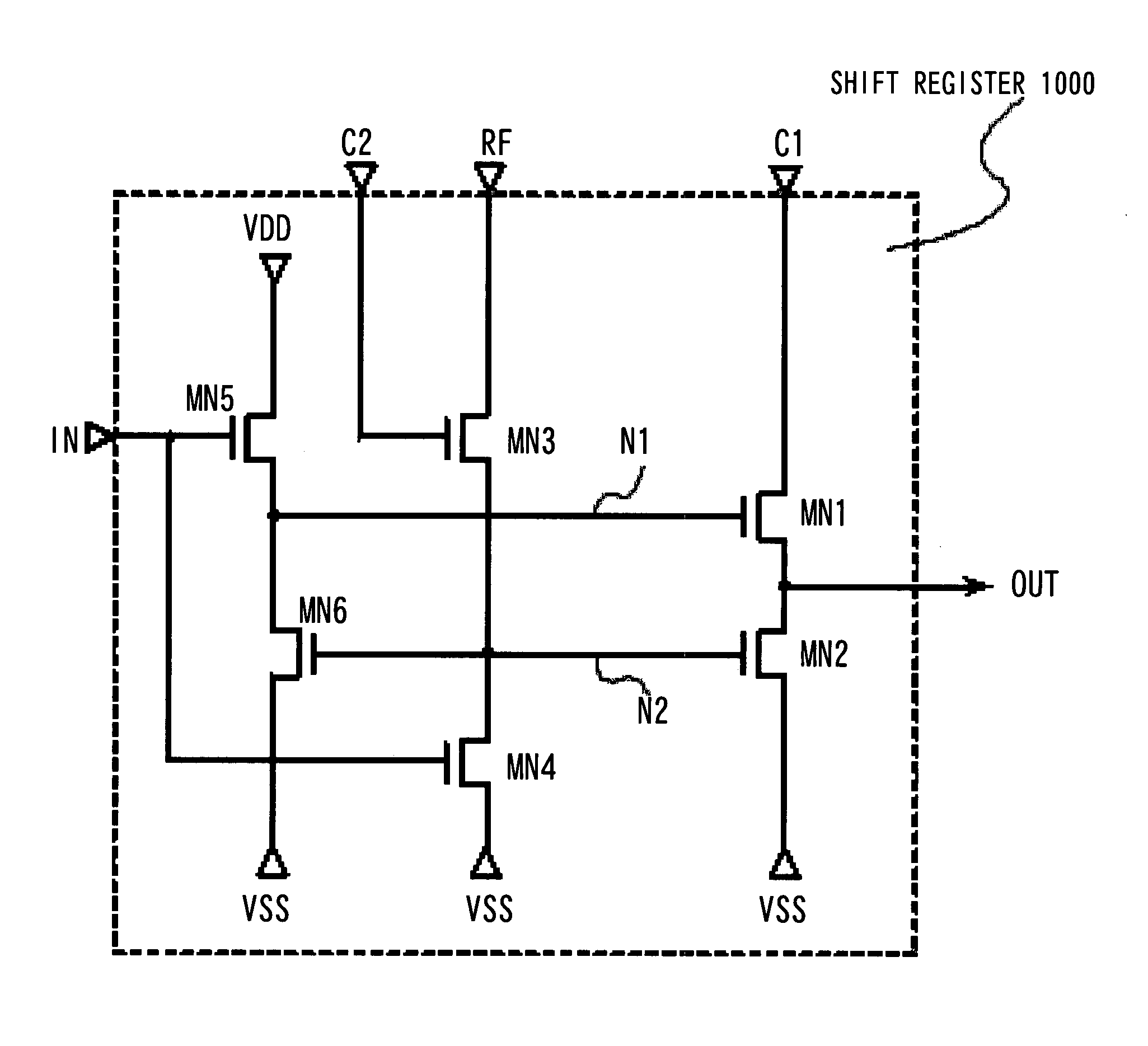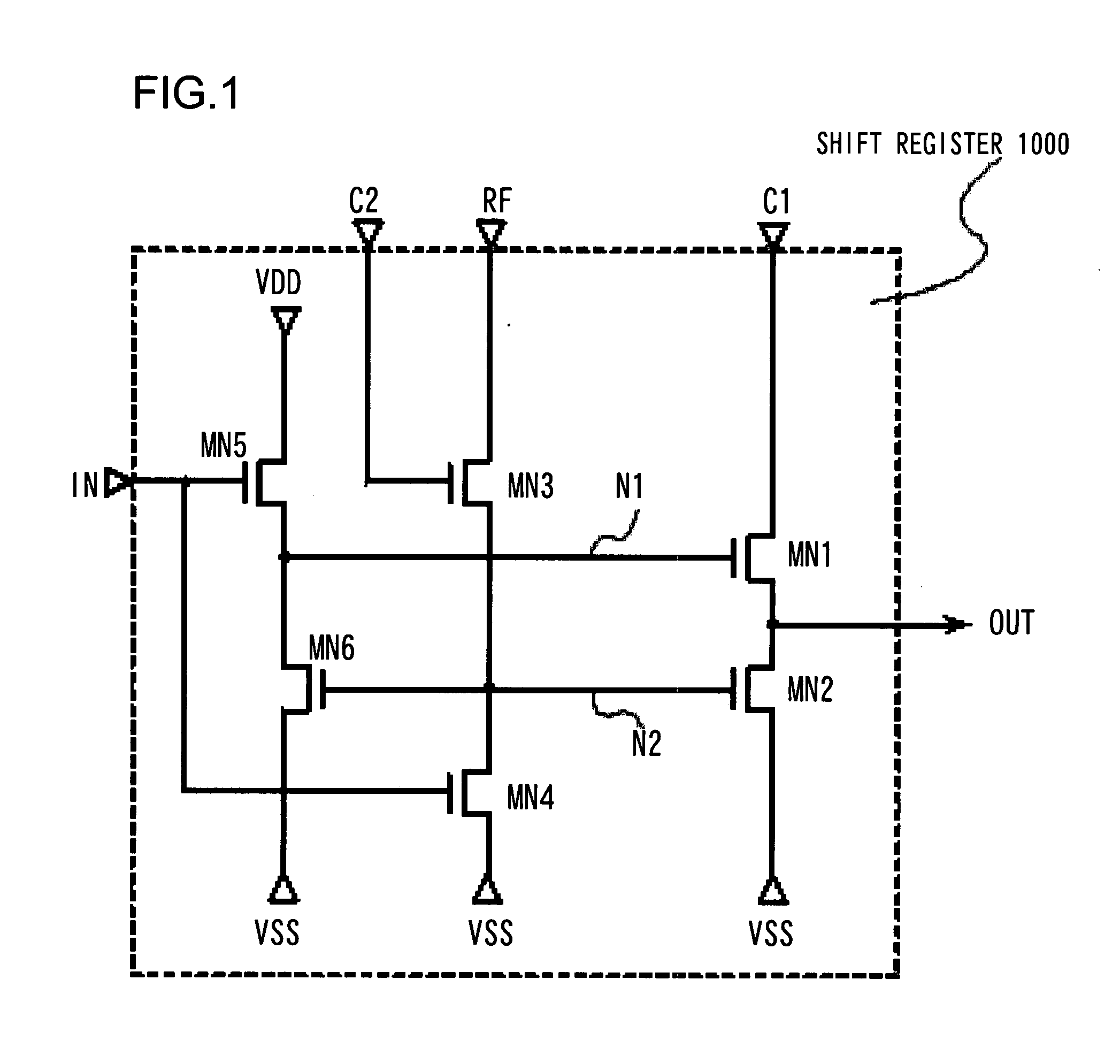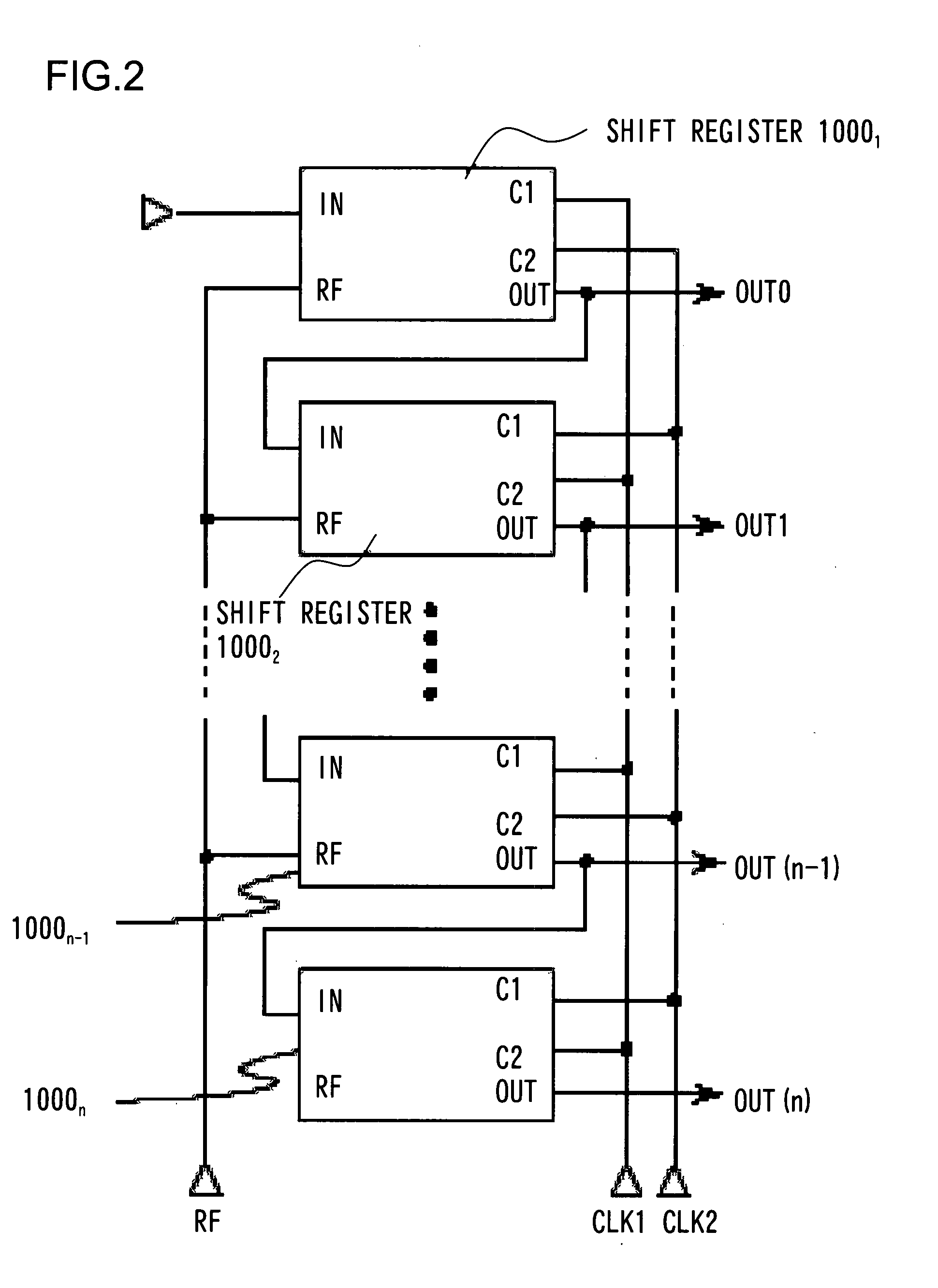Semiconductor circuit, scanning circuit and display device using these circuits
a scanning circuit and semiconductor technology, applied in the direction of digital storage, instruments, pulse automatic control, etc., can solve the problems of low current driving capability of transistor mb>2/b>, high added value and high cost, and achieve the effect of improving the margin of circuit operation
- Summary
- Abstract
- Description
- Claims
- Application Information
AI Technical Summary
Benefits of technology
Problems solved by technology
Method used
Image
Examples
first example
[0091]FIG. 1 is a diagram illustrating the arrangement of a semiconductor circuit according to a first example of the present invention, and FIG. 2 is a diagram illustrating an example of an arrangement in which a shift register (semiconductor circuit) 1000 shown in FIG. 1 is provided as a basic circuit unit. The physical shape and size of each N-channel MOS transistor (referred to as an NMOS transistor) may be designed within limits in which circuit operation is possible with a sufficient operating margin.
[0092]In the example illustrated in FIG. 1, though it does not represent any particular limitation, as control signals, first and second clock signals (CLK1 and CLK2) are input from first and second clock terminals C1, C2, respectively, a start signal (ST) is input from a signal input terminal IN and a refresh signal (RF) is input from a terminal RF, and an output signal (OUT) is output from an output terminal OUT. More specifically, as shown in FIG. 1, the shift register 1000 inc...
second example
[0122]FIG. 5 is a diagram illustrating the arrangement of a second example of the present invention. The structural difference between this example and the first example is the polarity (conductivity type) of the transistors that construct the shift register 1000. Whereas the shift register is composed of NMOS transistors MN1 to MN6 in the first example, it is composed of PMOS transistors MP1 to MP6 in this example.
[0123]The physical shape and size of each P MOS transistor may be designed within limits in which circuit operation is possible with a sufficient operating margin. An OUT signal is output by inputting clock signals CLK1, CLK2, start signal ST and refresh signal RF as control signals.
[0124]As in the first example, the shift register 1000 in this example also has the configuration shown in FIG. 2.
[0125]FIG. 6 is a timing chart for describing the operation of this example. The operation of this example will be described with reference to FIGS. 2, 5 and 6.
[0126]First, when th...
third example
[0145]The structure of a third example of the present invention will be described next. FIG. 8 is a diagram illustrating the arrangement of a third example of the present invention. As illustrated in FIG. 8, this example is such that the shift register 10001, which is the basic structural unit, is composed of NMOS transistors (MN01 to MN07).
[0146]FIG. 8 illustrates an arrangement in which two of the shift registers 1000 are connected together to form two stages. The structure of the shift register 10001 of the first stage comprises the components of FIG. 1 described above as the first example.
[0147]The structural difference between the shift register 10002 of the second stage (and subsequent stages) and the shift register 10001 of the first stage is the portion having cascode-connected NMOS transistors MN13 and MN17.
[0148]In the shift register 10001 of the first stage, a transistor MN03 controlled using the signals RF and CLK2 is connected to the RF terminal and a node N02. From the...
PUM
 Login to View More
Login to View More Abstract
Description
Claims
Application Information
 Login to View More
Login to View More - R&D
- Intellectual Property
- Life Sciences
- Materials
- Tech Scout
- Unparalleled Data Quality
- Higher Quality Content
- 60% Fewer Hallucinations
Browse by: Latest US Patents, China's latest patents, Technical Efficacy Thesaurus, Application Domain, Technology Topic, Popular Technical Reports.
© 2025 PatSnap. All rights reserved.Legal|Privacy policy|Modern Slavery Act Transparency Statement|Sitemap|About US| Contact US: help@patsnap.com



